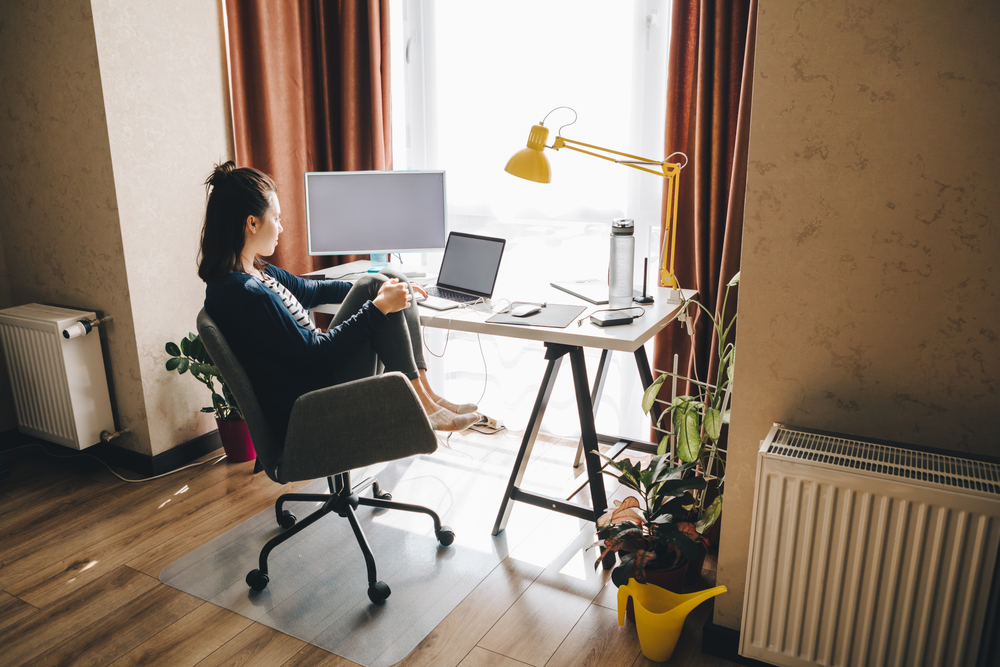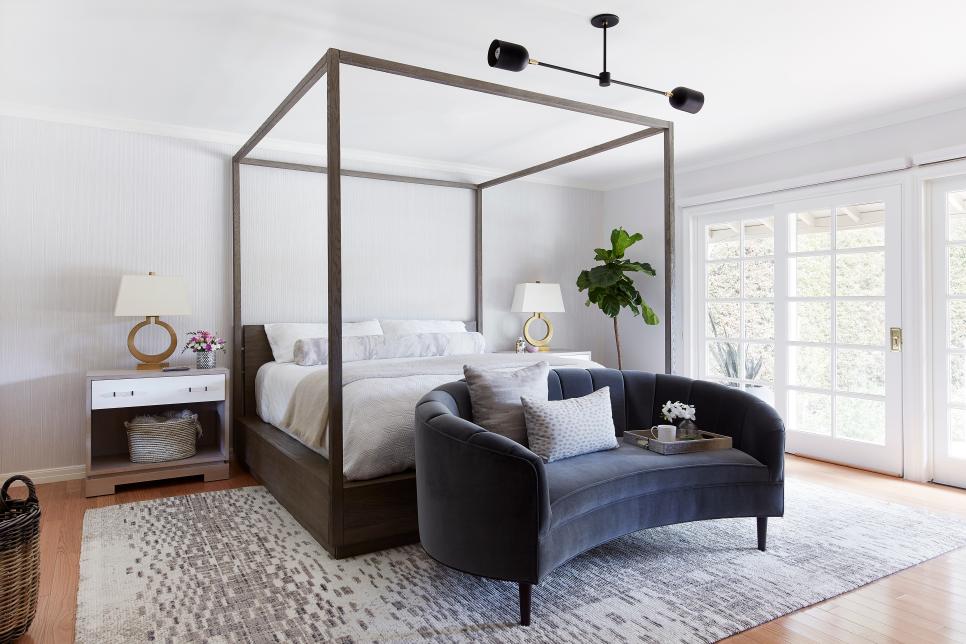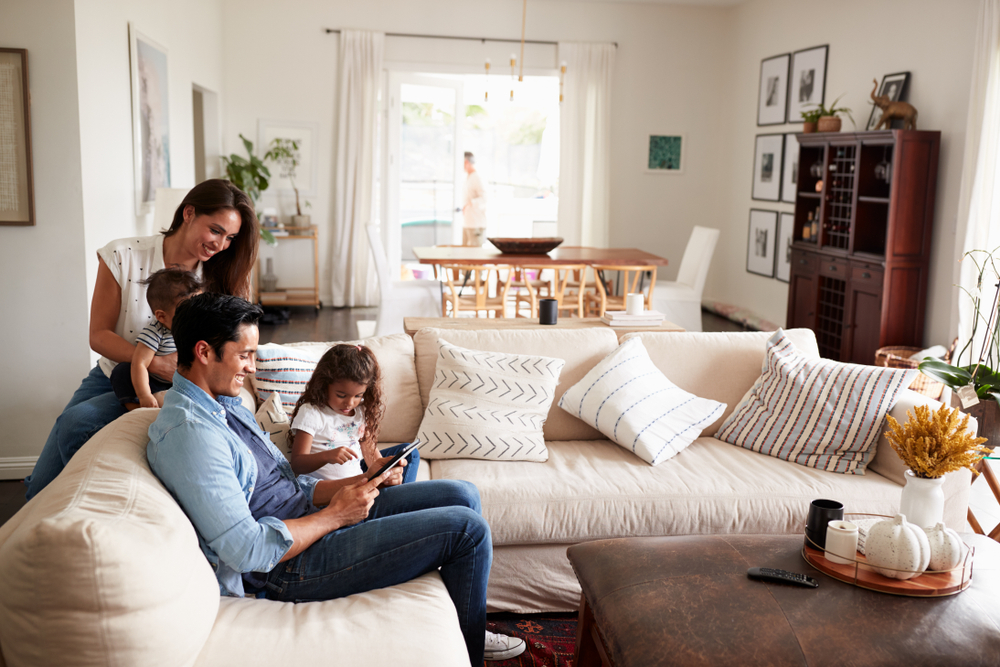Since the COVID-19 pandemic, 42 percent of Americans have moved to working from home full-time. And while working from home, many homeowners have begun to appreciate certain details and touches within their environment. After all, spending all day in one place can bring about a greater appreciation for a space. Americans have even begun nesting, taking pride in their homes now more than ever.
But when it comes to nesting and sprucing up a home, the pandemic is also creating changes in style and the way we use our spaces. What exactly does this mean? Here’s how COVID-19 is changing interior design and adapting to the new nesting lifestyle.
Versatile, Durable Flooring
Due to the new work-from-home lifestyle, homes require more versatile and durable types of flooring now more than ever. The right kind of flooring can make your home feel like a sanctuary while also being able to withstand all-day foot traffic similar to that of a light commercial space. Hardwood floors are still a top contender for homeowners, especially in terms of resale value. However, vinyl plank flooring is incredibly durable, withstanding scuffs and being water-resistant–if not waterproof–making it highly versatile. Plus, vinyl can resemble authentic hardwood for homeowners who appreciate the look.
Multipurpose Work Spaces

Source: Vera Petrunina/Shutterstock.com
Working and schooling from home have caused a significant shift in how many homeowners use their space. Many have had to get innovative, transitioning a corner of a living room into a makeshift classroom, while others have transformed guest rooms into personal home gyms. Essentially, our home’s interior design is changing to include more multi-functional features such as built-in bookshelves and desks.
Making Thoughtful Choices
More homeowners have begun to make more thoughtful choices when it comes to making purchases for their home. Aiming to support the local community and keep businesses afloat, homeowners have begun to shop local instead of buying from the big box stores. The support of local businesses comes in many forms, from purchasing antiques from the thrift store down the street to hiring out professional installers and construction crews to take on remodels, which have seen a significant increase. Local flooring dealers, such as Twenty & Oak, are a more thoughtful choice because they direct the homeowner to a local, well-informed store rather than big box stores.
Homeowners have also made more eco-conscious choices as well, reusing and recycling their own items. Even if they choose to replace an outdated item, they will try to sell it online instead of throwing it out on the curb.
The New ‘Heart of the Home’
While the kitchen is considered the heart of the home, that might be slowly changing. With many families being together at all hours of the day, the kitchen is no longer the space everyone gathers around to converse after coming home from school or work. Instead, the living room is taking its place, acting as a more comfortable and inviting central hub of operations. This is due, in part, to how the living room is being treated–like a parlor. With various spaces, such as a pillow-filled sofa that invites you to settle in and make video calls or a game table the kids can enjoy after school work, the living room has essentially been turned into a multipurpose space.
Open Layouts and Pocket Doors
While many people gravitate toward homes with spacious rooms and open layouts, there have also been more requests for privacy features like pocket doors, which allow for temporary privacy. Pocket doors are quite versatile, allowing them to be tucked into walls to expand an area’s footprint or closed to transform a room into a quiet retreat. In a crowded home, pocket doors allow kids to enjoy a movie in the living room while the parents make a home-cooked meal in the kitchen. When families are forced to share a home 24/7, it’s healthy to find a balance between social activities and solo time, making a communal-oriented open layout a bit tricky. But pocket doors have been a saving grace for many homeowners!
Master Bedroom Seating

Source: Petinov Sergey Mihilovich/Shutterstock.com
Whether it’s because we miss the experience of a high-end hotel suite or because parents simply need a hideaway, master bedroom seating has become a popular trend. Bedroom seating offers a place to sequester and find some peace and quiet in the middle of the day while the kids are participating in homeschool classes or partners are having a video chat. It’s not just about master bedroom seating either. Kids appreciate their own bedroom seating getaway, allowing them to focus on their studies and enjoy their own hobbies in their bedrooms, even if it’s away from other siblings.
If you have a spacious bedroom with a dormer nook, slide in a pair of lounge chairs along with a side table for a cup of morning coffee or tea. If you have a more compact bedroom, your bedroom seating can be as simple as a bench or settee at the foot of the bed.
Elevated Outdoor Oasis
The outdoors has been a place of refuge just as much as our homes. And many homeowners have taken to finally completing their backyards and outdoor living spaces exactly how they dreamed. It allows them to enjoy their entire outdoor living space in their free time, and also further into the season. Forced to take more of a staycation approach, homeowners have built up their backyards and insisted on spending more on luxury items like pools, outdoor heaters, smokeless fire pit inserts and high-quality outdoor furniture meant to stay out year-round.
Using Warmer Hues
Neutrals have been a mainstay in interior design and homes for a while now. But these days, homeowners have gravitated more toward warmer hues with pinkish undertones. And it’s easy to see why. Overall, warmer hues lend a more welcoming touch. And while sheltering in our homes, warmer hues can offer a loving embrace and make us feel more cheerful.






